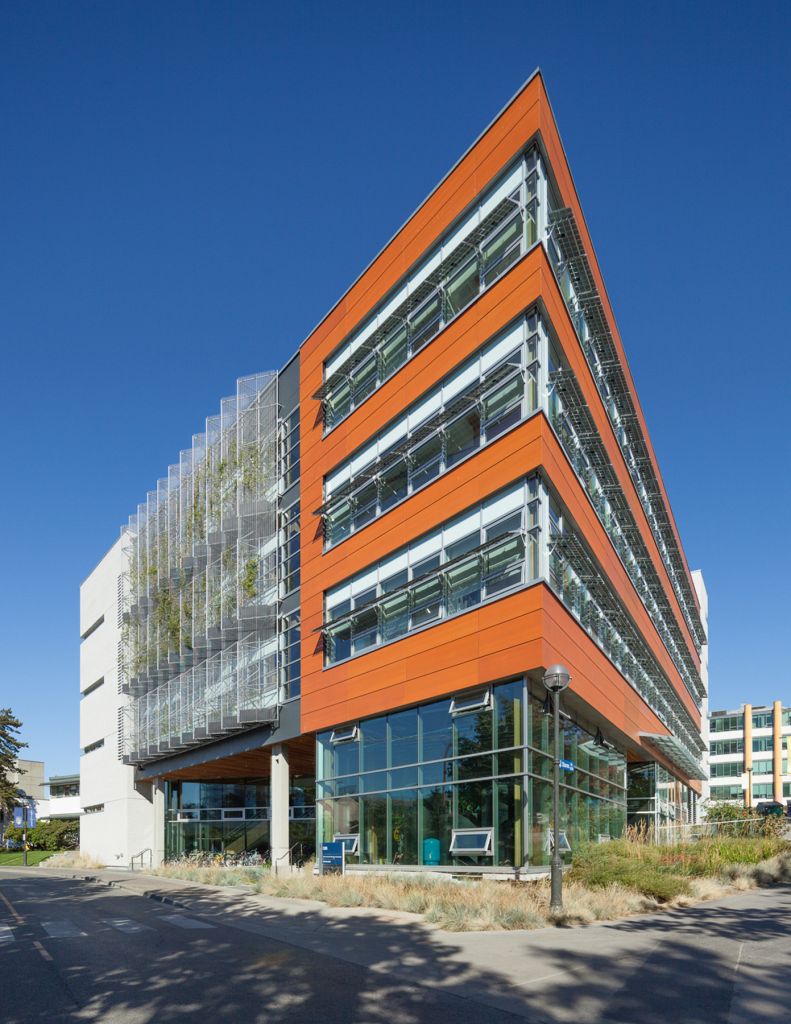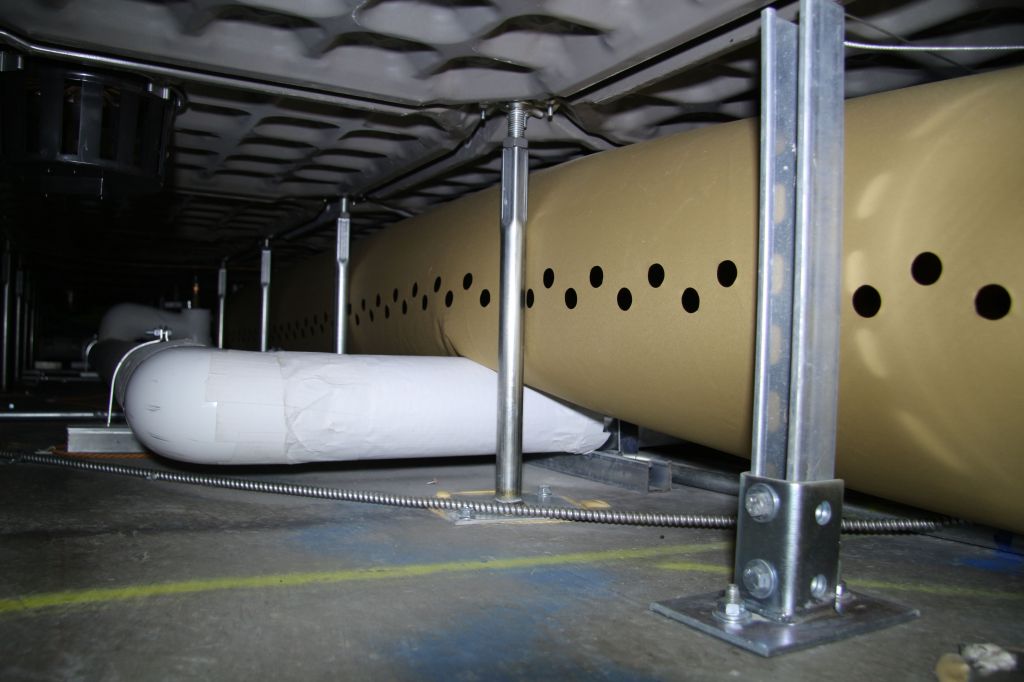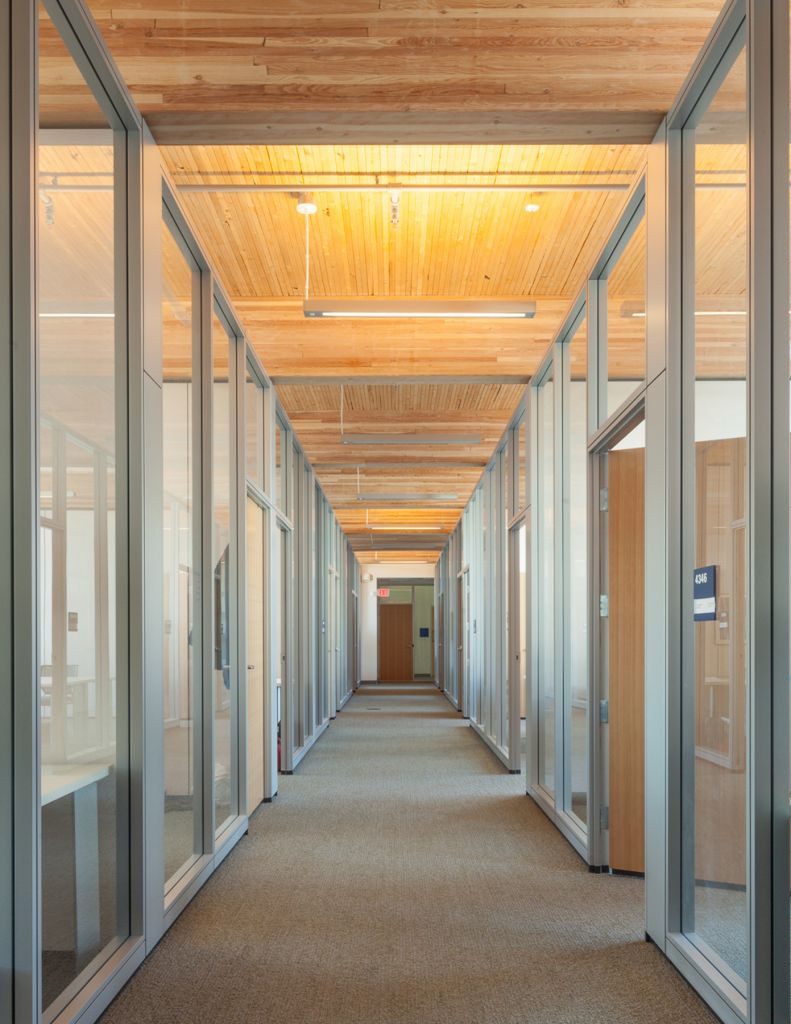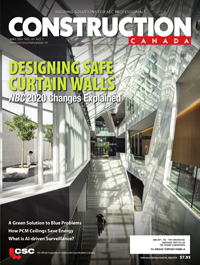Vancouver campus building boasts green technologies

The University of British Columbia’s (UBC’s) Centre for Interactive Research on Sustainability (CIRS)—one of North America’s most sustainable buildings—employs a state-of-the-art HVAC design using geothermal heat scavenging from neighbouring buildings and the sun, as well as other green technologies.
Vancouver-based consulting engineering firm, Stantec, designed the HVAC system that will be an example of technology and building/occupant interactive research and energy conservation for decades. The four-storey, 6038-m2 (65,000-sf) net-positive CIRS building has achieved Platinum under Leadership in Environmental and Energy Design (LEED) program, and has also applied for Living Building Challenge recognition.
Stantec principal, Jimmy Ng, P.Eng., LEED AP, worked with a CIRS research team led by John Robinson, PhD, and Vancouver-based Perkins+Will architects.
Focusing on maintaining good indoor air quality (IAQ), the design uses both natural and displacement ventilation through under-floor air distribution (UFAD). In the CIRS project, the UFAD acts as a 457-mm (18-in.) high ventilation plenum to distribute air strategically through floor diffusers. Consequently, air is discharged from the floor upward, as opposed to overhead with conventional air-mixing ducts.
Distributing heated air overhead requires approximately 25 per cent more fan horsepower and is less efficient in getting air to the occupied zone. CIRS’ supply air is discharged to each floor’s UFAD, controlled by the building automation system (BAS).
Fabric HVAC duct
Pressurized UFAD systems contribute to the achievement of several LEED credits in categories such as:
- Indoor Environmental Quality (EQ) Credit 6.2, Controllability of Systems–Thermal Comfort;
- EQ Credit 7.1, Thermal Comfort; and
- EQ Credit 7.2, Thermal Comfort Verification.
However, they sometimes suffer unintended temperature gain of the supply air at the perimeter. This challenge leads to increasing airflow volume or decreasing supply air temperature, resulting in inefficient mechanical operation and discomfort as interior zones may receive excessive cooling. Therefore, a fabric ductwork designed specifically for UFAD systems, and Underwriters Laboratories (UL)-approved, was installed to distribute air closer to all floor diffusers and especially the perimeter. The design team worked to size the under-floor textile duct for minimal static pressure drops.

UFAD systems certainly lend a ventilation advantage in sustainable building approaches, but they need fine-tuning. Air leakage in UFAD and its interior electrical junction boxes can add up to 20 to 30 per cent efficiency losses when not properly sealed with code-compliant firestop materials; therefore, a local general contractor pressure-tested the UFAD for any leakage after construction. Further, supply air inside UFAD systems, in many instances, would be better distributed via fabric ducts to ensure it is dispersed where most needed.
Installing metal duct with registers and dampers inside UFAD plenum is an alternative, but fabric duct’s specifically designed linear diffusion characteristics distribute air more evenly. The ductwork’s flexibility easily circumvents utility piping obstacles and can be quickly rerouted during floor reconfigurations.
One of two centralized air-handlers in the basement’s mechanical room provides conditioned air to each floor’s UFAD metal plenum that supplies each fabric duct. Each plenum has dampers the BAS can automatically shut off by zone during unoccupied periods or when the building mostly relies on natural ventilation.
CIRS also has manual or automatically operated high- and low-level windows, which occupants or the BAS can open for free cooling and natural ventilation when temperature and humidity conditions allow. The UFAD areas also rely on a high-performance envelope and high R-value building design that employs materials specified by Perkins+Will and architecture/engineering firm, Morrison Hershfield (Vancouver). The design limits solar gain while using the building’s sustainable geothermal, heat-scavenging, and solar panels to maintain an 18-C (65-F) UFAD discharge temperature.

The second air-handler supplies CIRS’ 425-seat auditorium. The theatre also uses air displacement, but with an under-floor metal air distribution system designed specifically for theatres. Unlike the building’s offices and labs that lack active cooling, the auditorium uses mechanical cooling through heat pumps that reject heat into the geothermal field, when heat is not being extracted from it.
In addition to the ventilation strategy, CIRS uses both photovoltaic (PV) electric and hot-water solar panels. The panels convert sunlight into electricity and harvest warmth for pre-heating water in the building. Both panel technologies are also integral in shading the four-storey atrium skylight, the south and southwest façades, and part of the south roof from direct sunlight.
The geothermal field supplies one 118-kW and two 196-kW heat pumps. As the building itself produces no emissions, a 200-kW electric boiler for backup and peak-demand was specified versus gas-fired models.
Other sustainable measures include:
- rainwater harvesting for potable uses;
- wastewater treatment and recycling (water reclamation) for toilet flushing and landscaping irrigation; and
- radiant heating is through radiant slabs and perimeter radiators.
 Nick Paschke is the new product sales manager at DuctSox Corporation, which specializes in applying textile air dispersion systems for under-floor air distribution (UFAD), labs, and critical environments. During his 19-year career with DuctSox, his responsibilities have included heading up engineering, marketing, R&D, and product development. Paschke can be contacted at npaschke@ductsox.com.
Nick Paschke is the new product sales manager at DuctSox Corporation, which specializes in applying textile air dispersion systems for under-floor air distribution (UFAD), labs, and critical environments. During his 19-year career with DuctSox, his responsibilities have included heading up engineering, marketing, R&D, and product development. Paschke can be contacted at npaschke@ductsox.com.







